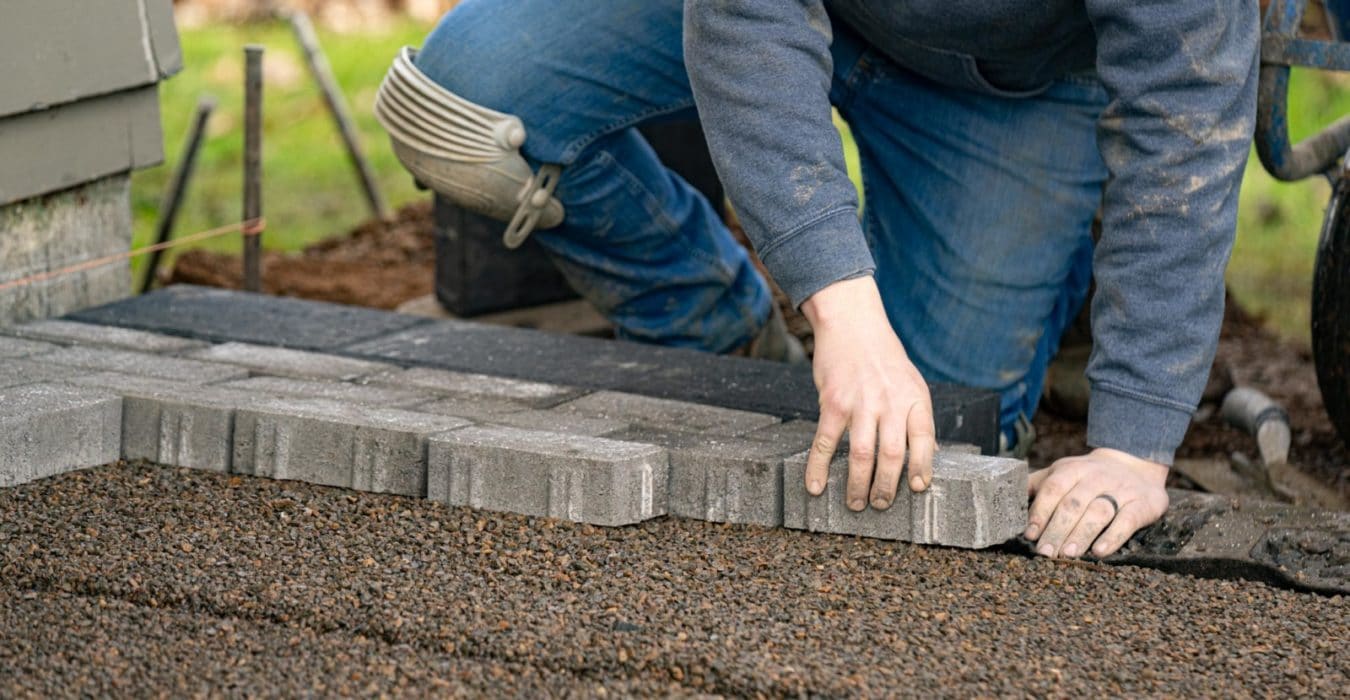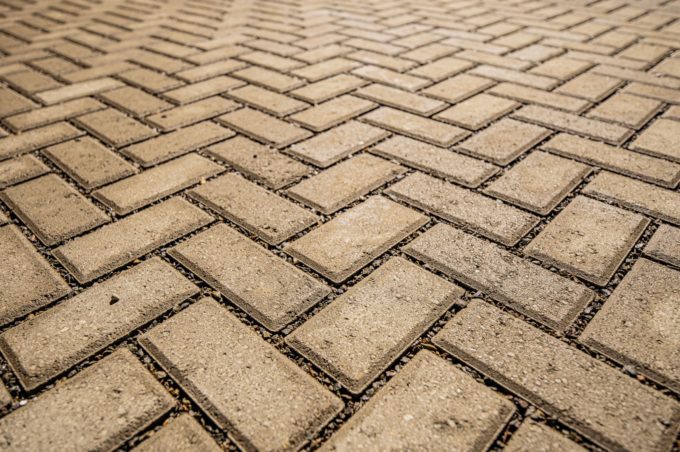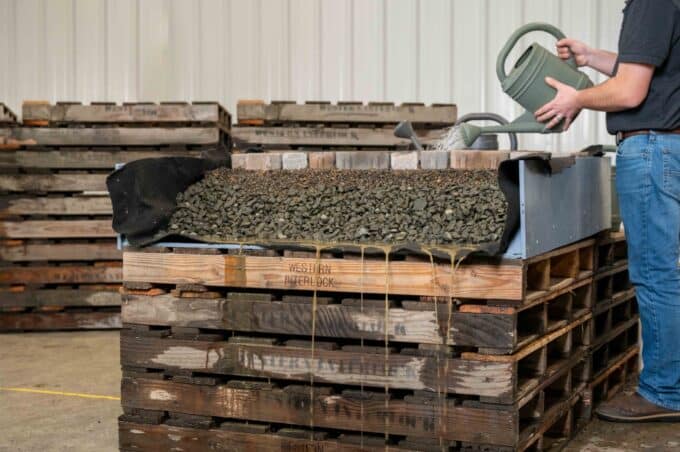Get our FREE Project Planning Guide
"*" indicates required fields
If you want to build a paver patio, walkway, driveway, or retaining wall, you’ll need to select the proper base material. Different professionals will utilize various base materials depending on the application and type of paver being installed. Their opinions may even vary for what the best base for pavers is. Your various patio paver base options have their own set of benefits and drawbacks, so we’re going to help you choose the right one for your project.
Choosing the wrong base can lead to paver failure, cracking, unwanted movement, and trip hazards, so it’s important to use the correct base material for your application. Before we can explain your paver base options, you’ll need to know what goes into a base. Let’s dig in.
Best base for pavers – What comprises a paver base?
A paver base is made up of several different material layers with varied support functions. The support system under pavers consists of three levels:
Sub-base
The sub-base is the deepest layer of your project’s foundation. The bottom layer of soil is typically the sub-base for most projects. Depending on where you reside, your sub-base might be clay, rock, or sand. If you live in the Pacific Northwest, it will almost certainly be dirt.
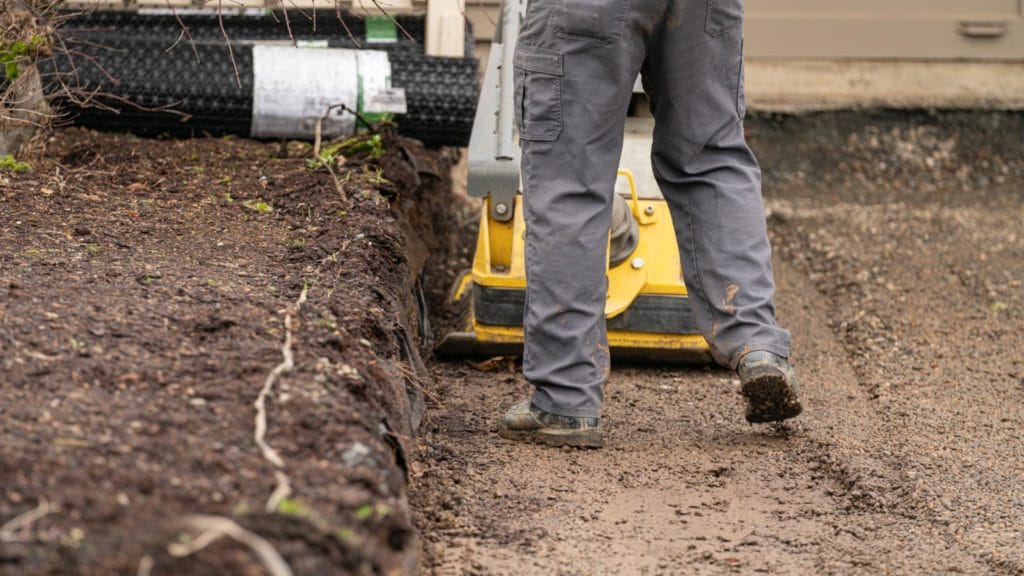
Baselayer
The base layer is the next level of paver support and acts as a cushion between the paver and sub-base. This layer is primarily made up of 3/4″-0 gravel (we prefer crushed quarry rock), which has small particles that interlock with one another to hold secure under paver weight.
Bedding layer
The paver bed is usually made of sand, 1/4″-10 crushed gravel, or synthetic material, and is the topmost paver support layer keeping pavers in place.
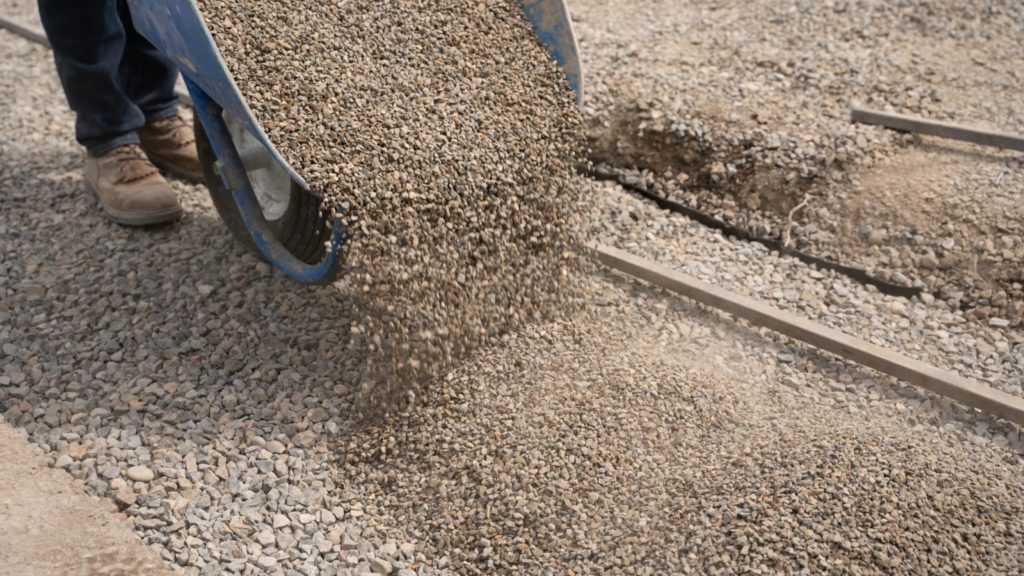
Best base for pavers used by the professionals
Professionals use three main paver base materials: sand-set, open-graded, and synthetic. Let’s look at the benefits and drawbacks of each paver base material to help you decide which is right for your paver project.
Dense graded base (sand-set)
A sand-set paver base is the traditional way to install pavers. This method uses a layer of sand as a bed between the base and pavers. After installing sand, the pavers are laid on top and pressed into place.
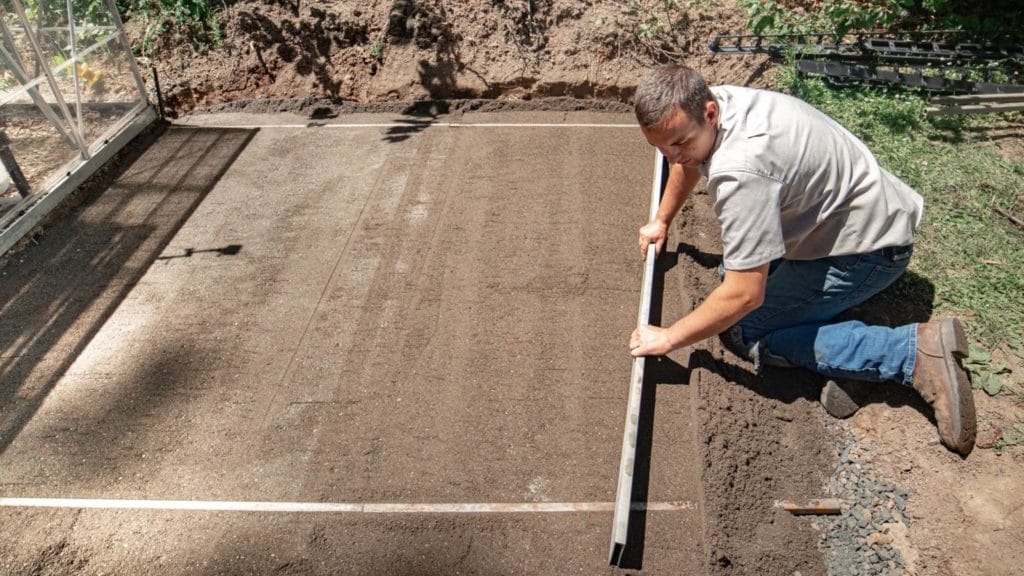
The biggest benefit of this type of paver base is that it’s very durable and can last for many years if installed correctly. However, because it’s so dense, sand-set bases can be difficult to work with and require heavy equipment for installation.
Another downside of sand-set paver bases is that the paver joints need to be filled with polymeric sand after installation to keep them in place and prevent weeds from growing through them. Additionally, sand-set paver bases are not as forgiving as some of the other paver base options if there is an error during installation.
For example, you must make sure the sand isn’t too dry or too wet. It should be damp enough to move about freely but not so wet that it clings to everything.
Open-graded base
An open-graded paver base uses 1/4″-10 crushed gravel or crushed stone as its support layers. This type of base is beneficial because it is porous and allows water to flow freely through. This helps prevent paver failure due to hydrostatic pressure (the force of water pushing against a surface).
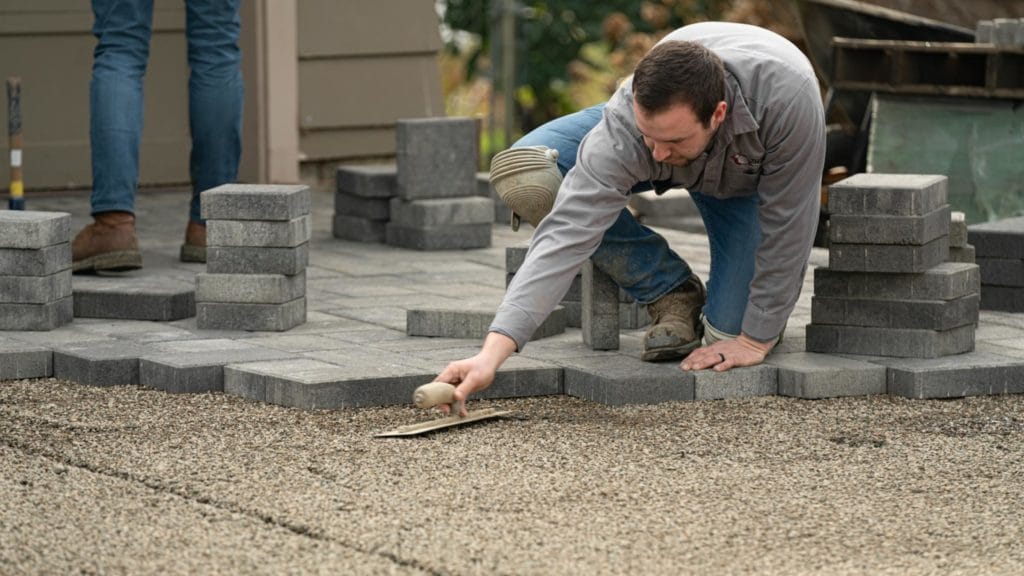
Open-graded paver bases are generally used for large paver projects like driveways and parking lots on commercial properties. Because open-graded paver bases allow water to flow freely, they’re a great option for permeable paver installations or environmentally friendly landscapes—if you live in an area that’s prone to flooding or has drainage issues.
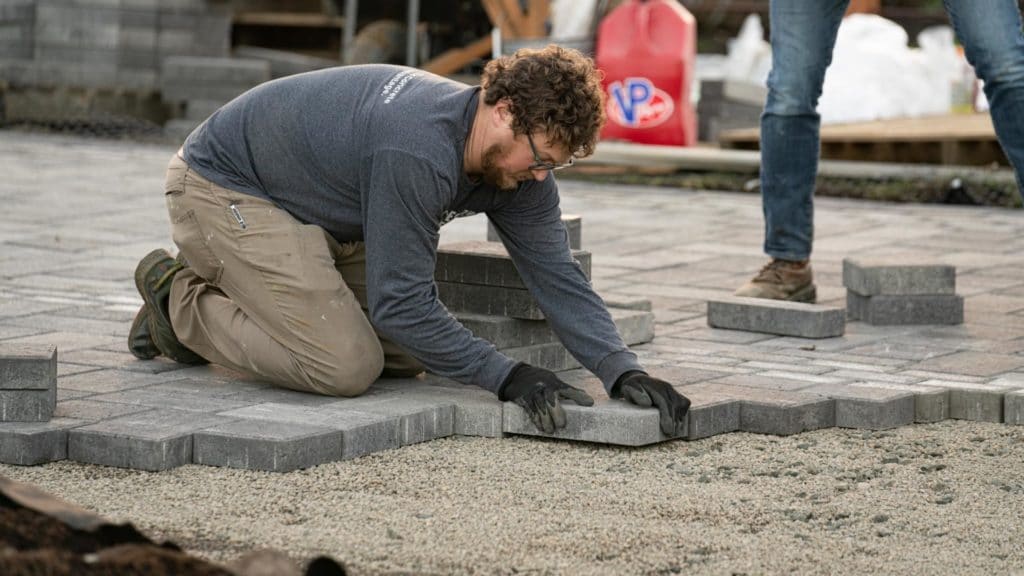
The main benefit of using an open-graded paver base is that it’s very forgiving if any mistakes are made during installation. Additionally, this type of paver base requires less preparation than a sand-set base and can be installed with less equipment. However, they may require additional maintenance if weeds start to grow through the paver joints.
Synthetic base
A synthetic paver base material is a modern alternative to traditional paver bases. Synthetic materials are commonly made from recycled plastic bottles, creating an eco-friendly solution for paver projects.
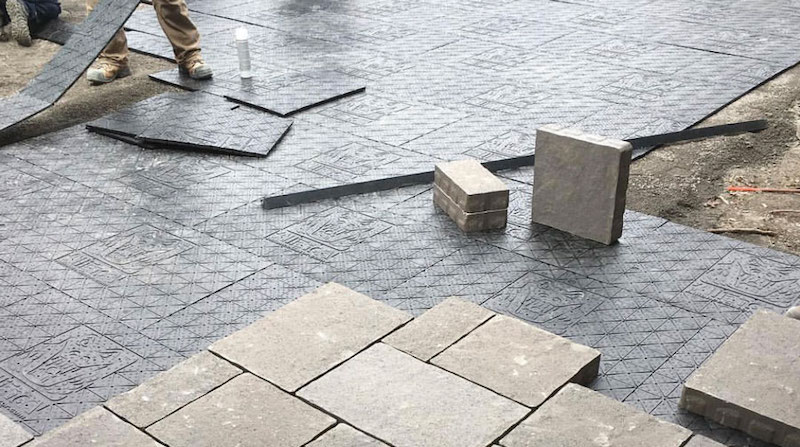
Popular synthetic base products are Gator Base and Paverbase. These paver base panels are typically five-or-six square-foot panels made of high-density polypropylene.
This type of base is popular because it’s easy to install and doesn’t require any special equipment. It also drains well, which prevents paver failure due to hydrostatic pressure. Other highlights:
- Has a high melting point and is used for many microwave containers.
- Will not break down easily from water, acids, or bases.
- Is durable and resistant to cracking.
- Is extremely versatile and has uses in many industries even outside of the construction industry.
Synthetic base products are made with channels and drainage holes in them to allow for proper water flow and help avoid buildup underneath your interlock. On the edges is a tongue-and-groove system that allows each unit to interlock with one another, making for a patio that works as one complete unit.
One downside of using a synthetic paver base is its higher upfront cost compared to other paver base options. Another downside is that they’re man-made and not as durable as harder options like rock and sand, meaning they can break down over time.
Don’t use dirt as your base
The biggest mistake most people make when installing pavers is putting them on dirt. Don’t do it!
Dirt is not a suitable paver base because it doesn’t drain well and can shift, sink, and swell easily depending on weather conditions. Additionally, if your soil isn’t level, you’ll have uneven pavers that will be difficult—if not impossible—to fix.
Some shoddy paver installers may offer to install paver bases on dirt because it’s easier for them and cheaper for you. However, such a base won’t last as long as one that is properly prepared with the right base material.
So, what is the best base for pavers?
The answer honestly depends on your project needs and preferences.
If you’re a traditionalist and want to utilize tried-and-true approaches that function in almost any setting, go with a sand-set foundation. It’s safe and reliable.
If you’re looking for an easy installation with less required equipment, open-graded crushed stone may be the best option for you. Or, if water drainage is a concern, then an open-graded paver base would be a better choice.
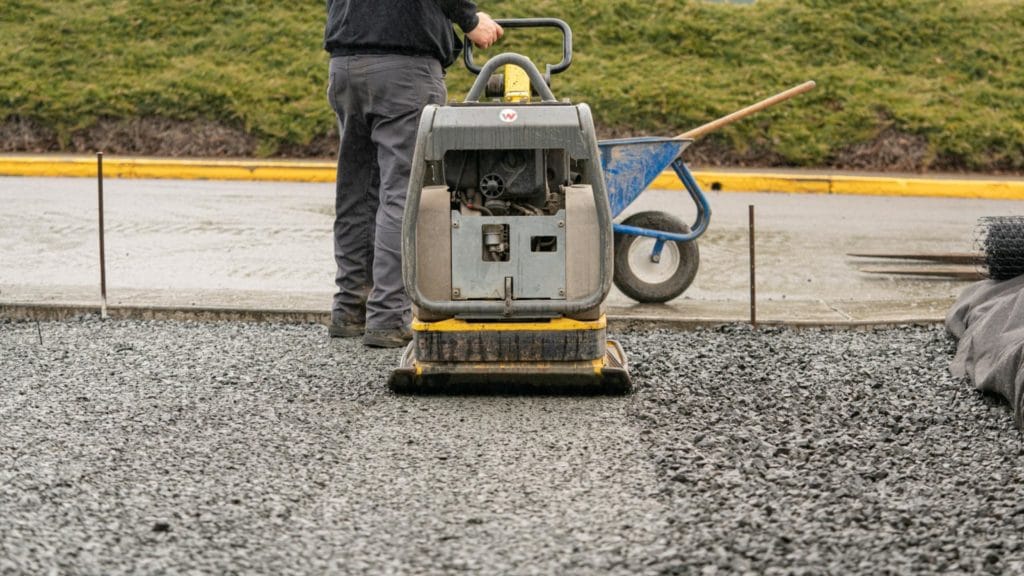
For projects with large pavers or in areas that are prone to flooding, consider saving time and ensuring your base doesn’t easily wash away by using a synthetic paver.
Lay pavers that last
So there you have it! Follow these guidelines and your pavers will last. Don’t forget to also consider how deep you need to dig for your paver project (it will depend on what you’re using them for and how much traffic they will receive).
If you’d like to learn more about how to install pavers for a patio, fire pit, driveway, or another use case, watch our free online video training: How to Install Pavers. We have dozens of step-by-step DIY paver installation tutorials right here on WesternInterlock.com/DIY.
You can learn how to build just about anything with pavers, time, and some tools.
If you’re looking for an instant recommendation on the perfect paver for your next project, try taking our Paver Finder quiz. If you’re ready to talk with someone about your project, or order pavers, select Get a Quote on WesternInterlock.com and fill out the form. We’ll get right back to you.
Get our FREE Project Planning Guide
Tell us where to send it and we’ll email the backyard planning guide to you right away!
"*" indicates required fields


